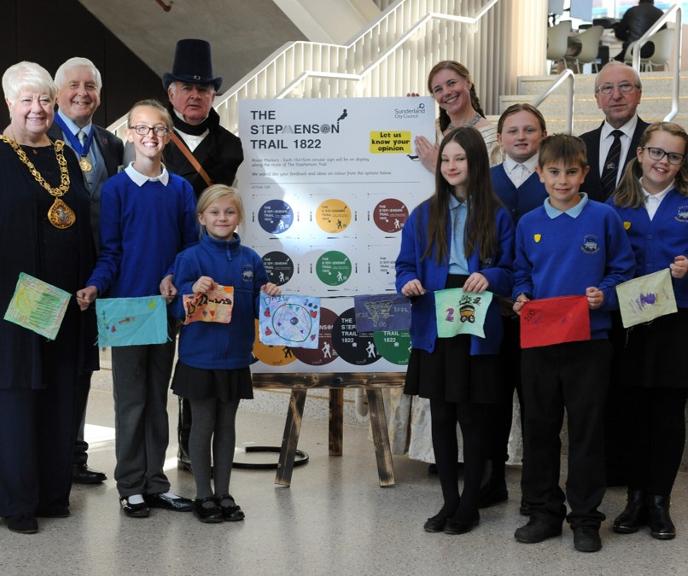Celebrating our city's heritage
Schoolchildren, volunteers, and the wider community have come together to celebrate 200 years of the Stephenson Trail with a day of history, crafts and music.

The Hetton Colliery Railway, which was designed by the pioneering railway engineer George Stephenson, opened in 1822 and represented a hugely important development in the early history of railways.
It was the first railway to be designed from scratch to be operated without animal power, and the first entirely new line to be developed by George Stephenson. Hetton Colliery closed in July 1950, but you can still walk along the trail of the railway line.
Sunderland City Council has worked with partners including The Cultural Spring to organise a series of projects to mark the bicentenary, and the community gathered at an event at City Hall for a special celebration event on Friday 4 November.
During the event, schools were invited along to take part in creative workshops in stone painting, zine making, origami, collage, clay modelling and 3D printing to make works inspired by the railway.
Sunderland musicians have also taken part in the celebration, with Marty Longstaff (The Lake Poets) playing music inspired by the local community's history.
Mayor of Sunderland, Councillor Alison Smith, welcomed attendees to the celebration. She said: "It is a great honour to be able to talk about the significance of the Stephenson Trail, and how its importance has been acknowledged and recognised here today as we celebrate this City's great heritage.
"George Stephenson became known as the Father of Railways, and his innovation and invention which began right here in Sunderland started a momentous change leading to the Victorian rail building revolution, which went on to change the world. I am delighted that we get to celebrate this innovation today and continue to share the city's history with a new generation."
The 200th anniversary celebration is a culmination of the work of a task group which was set up over a year ago to bring together the Coalfields, West and East Sunderland area committees, a variety of voluntary groups, council services, and residents to collectively improve, raise awareness, educate and celebrate the Stephenson Trail.
Councillor James Blackburn, Chair of the Coalfields Area Committee, said: "The East, West and Coalfield Area Committees are proud to support the work of all partners here today and our thanks go to the schools and community organisations involved, without whom this would not have been possible.
"This is a very exciting and historically significant event, and the connection to the exciting Riverside Sunderland development highlights why it is important for us to all to celebrate Sunderland's unique industrial heritage."
The Stephenson trail is 11 miles (18km) long. It starts in the Coalfields and runs through the West and East areas of Sunderland, ending at the River Wear.
You can find more information about the Stephenson Trail and its bicentenary celebrations at: Stephenson Trail Project — The Cultural Spring




